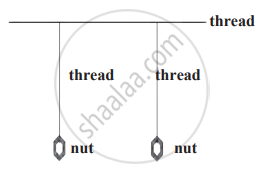Topics
System of Coplanar Forces
- Resultant of concurrent forces
- Resultant of parallel forces
- non-concurrent Non-parallel system of forces
- Moment of force about a point
- Moment of force about Couples
- Varignon’s Theorem
- Force couple system
- Distributed Forces in plane
Center of Gravity and Centroid for Plane Laminas
- Centroid for Plane Laminas
Equilibrium of System of Coplanar Forces
- Condition of equilibrium for concurrent forces
- Condition of equilibrium for parallel forces
- Condition of Equilibrium for non-concurrent nonparallel general forces
- Condition of equilibrium for Couples
Types of Support
- Load Support
- Beams Support
- Determination of reactions at supports for various types of loads on beams
Analysis of Plane Trusses
- Analysis of Plane Trusses by Using Method of Joints
- Analysis of plane trusses By using Method of sections
Forces in Space
Resultant of Noncoplanar force systems
- Resultant of Concurrent Force System
- Parallel Force System
- Non-concurrent Non-parallel Force System
Equilibrium of Noncoplanar force systems
- Equilibrium of Concurrent force system
- Equilibrium of parallel force system
- Equilibrium of non-concurrent non-parallel force system
Friction
- Introduction to Laws of Friction
- Cone of Friction
- Equilibrium of Bodies on Inclined Plane
- Application to Problems Involving Wedges
- Ladders
Principle of Virtual Work
- Applications on Equilibrium Mechanisms
- Applications on pin jointed frames.
Kinematics of Particle
- Rectilinear Motion
- Velocity and Acceleration in Terms of Rectangular Co-ordinate System
- Motion Along Plane Curved Path
- Tangentialand Normal Component of Acceleration
- Motion Curves (a-t, v-t, s-t curves)
- Projectile Motion
Kinematics of Rigid Bodies
- Introduction to General Plane Motion
- Instantaneous Center of Rotation for the Velocity
- Velocity Diagrams for Bodies in Plane Motion.
Kinetics of a Particle
Force and Acceleration
- Introduction to Basic Concepts
- D’Alemberts Principle
- Equations of Dynamic Equilibrium
- Newton’S Second Law of Motion
Work and Energy
- Principle of Work and Energy
- Law of Conservation of Energy
Impulse and Momentum
- Principle of Linear Impulse and Momentum
- Law of Conservation of Momentum
- Impact and Collision
- Introduction
- Experiment
Law of Conservation of Energy:
‘Energy can neither be created nor destroyed. It can be converted from one form into another. Thus, the total amount of energy in the universe remains constant.’
potential energy + kinetic energy = constant
`"mgh" + 1/2"mv"^2 = "constant"`
The sum of kinetic energy and potential energy of an object is its total mechanical energy.
We find that during the free fall of the object, the decrease in potential energy, at any point in its path, appears as an equal amount of increase in kinetic energy. (Here the effect of air resistance on the motion of the object has been ignored.) There is thus a continual transformation of gravitational potential energy into kinetic energy.
Experiment
1. Aim: To demonstrate energy transfer between two coupled pendulums.
2. Requirements: Two nuts, thread, and horizontal support (such as a rod or stick).
3. Procedure
- Cut two equal lengths of thread and attach a nut to each thread, forming two pendulums of the same length.
- Tie another thread in a horizontal position to act as a support.
- Attach the pendulums to the horizontal thread, ensuring they hang freely and do not collide while swinging.
- Swing one pendulum and observe the motion of both pendulums over time.
Coupled Oscillators
4. Observation: Initially, only the first pendulum swings. Gradually, its oscillation slows down while the second pendulum, initially stationary, starts to swing. The first pendulum transfers its energy to the second pendulum through the horizontal thread.
5. Conclusion: This experiment demonstrates the concept of energy transfer in coupled oscillators. The motion of one pendulum induces motion in the other, highlighting how energy can be shared between systems connected by a common medium. This phenomenon is an example of mechanical resonance and coupling in oscillatory systems.
Shaalaa.com | Conservation of Energy
Related QuestionsVIEW ALL [4]
The following data was obtained for a body of mass 1 kg dropped from a height of 5 metres :
|
Distance above ground |
Velocity |
| 5 m | 0 m/s |
| 3.2 m | 6 m/s |
| 0 m | 10 m/s |
Show by calculations that the above data verifies the law of conservation of energy (Neglect air resistance). (g = 10 m/s2).

